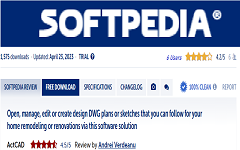MATERIALS
Assigns materials and settings to selected entities, layers, or colors. Materials are images or textures that enhance the visual appearance, including reflective and transparency properties, of the model when it is rendered using the Full Render command (not Render).
A different set of materials can be rendered with visual styles in IntelliCAD and in third-party software. Use the Explore Materials command for working with this other set of materials.
Assign materials to:

After your selection, the Assign Materials dialog box displays:
Assign Materials - Library tab

The materials library provides a selection of predefined materials that you can assign to surfaces in your drawing.
The predefined materials listed in the Material Library are initially stored in files on your hard disk. When they are assigned to a surface in your drawing, a copy of the material definition is loaded and saved in the drawing file. This ensures that your drawing will render the same even if you later edit the material definitions on your hard disk.
Library Lists all available materials, sorted according to whether they are stored in the current drawing or in the library on your computer. Click a material name (with a .tex file extension) to select it. Click None to clear the material assignment for the selected entities, layer, or color
Library Path Displays the path and folder of the loaded materials library. Click [...] to change the folder. Click Open Folder to open the folder in a separate window.
New Material The New button will create a new material and load the Material Editor dialog box so that you can define the material's characteristics.
New Folder Click to create a new folder within the currently selected folder.
Edit Item Click to modify the selected material's characteristics in the Material Editor dialog box.
Remove Item Click to delete the selected material from the drawing or library.
Reload Library Click to reload reload the definition of the currently selected material from the library. For example, if you make changes to a material in the library, you may want to reload that material in other drawings so that the changes you made will be effective in those drawings.
Restore Defaults Click to restore the default materials library. All changes that you've made to materials in the default library that is located in the Library Path will be overwritten. User libraries in other locations will not be affected. Additionally, Library Path is also set to the default. To change the path, use the Options - Paths/Files tab..
Library Path Displays the path where the default materials library is located. To change the path, use the Options - Paths/Files tab.
Open Path Click to open the library path in a separate window where you can browse files and folders.
Assign Materials - Mapping tab
After your selection, the Assign Materials dialog box displays:
Assign Materials - Library tab

Most materials are 2-dimensional, while surfaces in a drawing are 3-dimensional, and therefore must be mapped to the 3D coordinates of the 3D surfaces. Materials are files that are saved in the materials library, but how they are mapped is saved in either the entities or the layer you selected when you first started the Materials command.
Protection Type Select which geometric shape you want to use for mapping to surfaces: Planar, Cylindrical, or Spherical. Many surfaces are not planes, cylinders, or spheres, but the material is projected using this simple geometric shape. Depending on your selection, also specify the following:
Plane Normal Vector — Defines the orientation of the projection plane and is perpendicular (or normal) to the plane itself. For example, for a projection plane to be the x-y plane, the normal vector is the z-axis.
Cylinder Major Axis — Defines the major axis of the cylinder.
Sphere Major Axis — Defines the major axis which points to the north pole of the sphere. The first three options are the axis directions, X, Y, and Z. The fourth option is to specify the normal or axis vector directly using the entry boxes just below. The final option is to use the normal vector calculated for the drawing entity itself. This last option works best for entities that are nearly planar. The software will calculate the average normal vector.
Tile Select to repeat the material across the entire surface. If unmarked, a single instance of the image or a single cycle of the texture will be shown, and the surface area around the material will be black.
Maintain Aspect Ratio Select to apply the same scale value in all directions of a material (in Scale, only the first value is available). If unmarked, the material can be scaled differently in various directions (in Scale, all three values are available).
Hide Surface Select to exclude any hidden surfaces from the view and reflections of the final rendered image. However, hidden surfaces will still cast shadows. For example, you can render an architectural drawing of a building surrounded by other buildings but only see the shadows of the other buildings if they are hidden surfaces.
Center Enter the x-, y-, and z-coordinates of the center of the plane, cylinder, or sphere projection (Auto must be unmarked). If Auto is marked, the center of entities is used.
Scale Enter the scale values to adjust the size of the material applied to the surface. Maintain Aspect Ratio must be unmarked to enter all three scale values.
For planar mapping, scale values of 1 result in the material (image or texture) extending over a unit square (i.e., a square with width and height equal to one). If the scale values are greater than one, the image extends over a larger area. For example, if the first scale value is 2, the image or texture extends over a rectangular area of width 2. If the second scale value is 3, the image or texture extends over a rectangular area of height 3.
Rotation and Skew Enter the rotation and skew angle to apply to the material. For a planar mapping, the rotation angle and skew angle are applied the same way, added together to rotate the material on the plane. For cylindrical and spherical mappings, the rotation angle controls where around the circumference of the cylinder the wrap line appears, and the skew angle controls the angle of the pattern with respect to the axis of the cylinder or sphere.
Preview Displays a preview image of the selected material.
Brightness Slide to adjust the brightness of the preview image. Only the preview image is affected, not the rendering.
Sphere/Cube/Plane Select whether to map the material on the preview image as a sphere, cube, or plane. Only the preview image is affected, not the rendering.
Update Click to update the preview image according to the current selections. The preview image is affected, not the rendering.








